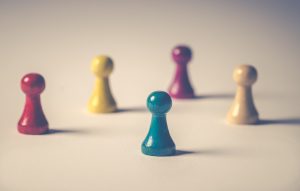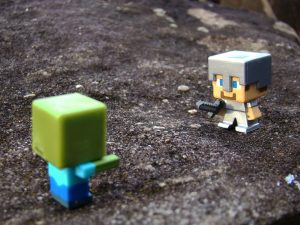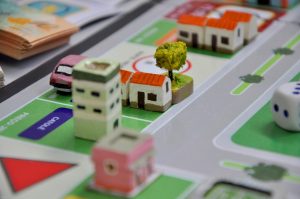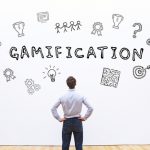By Andy Low

In my previous article, I have highlighted the key differences between games and gamification. We discussed how gamification works by motivating users to achieve the desired outcome. If you are attempting to create a gamified solution, it is important to know and understand the various elements that are important when designing a gamified solution.
In the coming weeks, we will produce a series of articles to discuss various game mechanics that are essential in the design of an excellent gamified solution.
What makes an excellent gamified solution tick? It is the storytelling or the aesthetics designs of the UIUX that appeals to you? Or is it the goal setting element or the competitive nature of the game that entice you to come back for more?
It is a widely recognised fact, that a good game or gamified solution includes the following key mechanics:
Goal Setting
Rules
Storytelling
Simplification of real-world complexities to simple models of reality
Competition
Reward Systems
It is the interaction of these various game mechanics that create the magical world of the game that keeps users coming back for more.
It is regrettable that some solution providers use either one or two mechanics and start using the term gamification to describe the solution. In all honesty, a solution that uses one or two game mechanics cannot be engaging let alone be considered a gamified solution.
In this article, we will deep dive into simplification of real-world complexities to simple models of reality. It is a mouthful, but is an essential component of an excellent gamified solution. So to make life a “touch easier” for us, I will call it “simple reality” moving forward in this article.
 Simple Reality
Simple Reality
Many successful games that we play include this essential element, let us take example of the board game Monopoly and the sandbox game Minecraft.
In the game Monopoly, we get in touch with the concepts of financial acquisition and develop the strategy to build an empire. While in Minecraft, we learn to create in a 3D world, our world. It teaches players the concepts of creativity and resource gathering.
Games are based on complex realities, and the very reason why they work is not that they include all the real lives complexities. It works because the game simplifies and generalise reality in a virtual space, players are involved in an abstraction of reality. (Karl Kapp, The Gamification of learning and instruction)

Simple reality vs Complex reality
The term “simple reality” is a key component in gamify solutions, and it breaks down complex ideas and real-world messiness into simple reality for players to engage. In the game Dunk Shot, the reality of shooting a basketball is distilled into simple aiming and strength control. As long as you get these two elements correct, your ball will go into the basket. The reality in shooting a basketball is a lot harder.
Now consider when you want to provide safety training to a class of unsuspecting foreigner workers. By using a gamified solution, we removing the messiness of a construction site and educate and illustrate to them key safety concepts in a virtual space like “line of fire” will be a lot easier.
Simple reality helps a player to understand what is going on within the game and by minimising the real-life complexities makes it possible to manage and understand concepts easily within the virtual space.
Cause and Effect
In a simple reality environment, we can easily identify the cause and effect of any action. In the game Monopoly, completing a round of the board each time will enable you to acquire wealth, and the wealth you have accumulated will allow you to buy real estate.
In real life, getting a full-time job alone will not enable you to accumulate wealth. You will need to balance spending and savings to start the process of wealth accumulation, and this process involves many years of waiting and hence does not provide an apparent cause and effect relationship.
This feature of a simple reality in a gamified world makes teaching skills and explaining concept very quickly. For example, an increase in physical activities helps to reduce chronic diseases and improve general wellness of a person. Improved welfare of a person makes a person more engage and energise.
In real life, physical activities can be demanding to busy employees. By explaining the cause and effect of the increase in physical activities, a gamified solution aims to motivate a player to do so.
Reality is messy
A lot of events that happen in real life, if added, can make playing a game very dull. Simple reality in a game world removes all those complexities and make it more fun and exciting.
In the racing game Daytona, imagine every time a player crashed a car he has to send it back to a workshop to fix it before he can race again. Necessary in real life, removed in games allow the player to focus on the essence of the game which is to win a race.
Shorten the learning cycle
In real life, the ability to grasp concepts can be overwhelming and difficult. In Dunk shot, trying to make a shot while running and facing the pressure from an opponent to block your advance is overwhelming. Very often, we forget the importance of aiming and the strength to deliver the shot. In simple reality, all the complexities are removed making it easier to grasp what is essential to provide a good chance.
Conclusion
Whether you are developing a gamified solution to change behaviour or develop skills, it is essential to implement the idea of simple reality. It allows players to focus on the essence of the game and remove other unnecessary noise to enhance the level of engagement.


